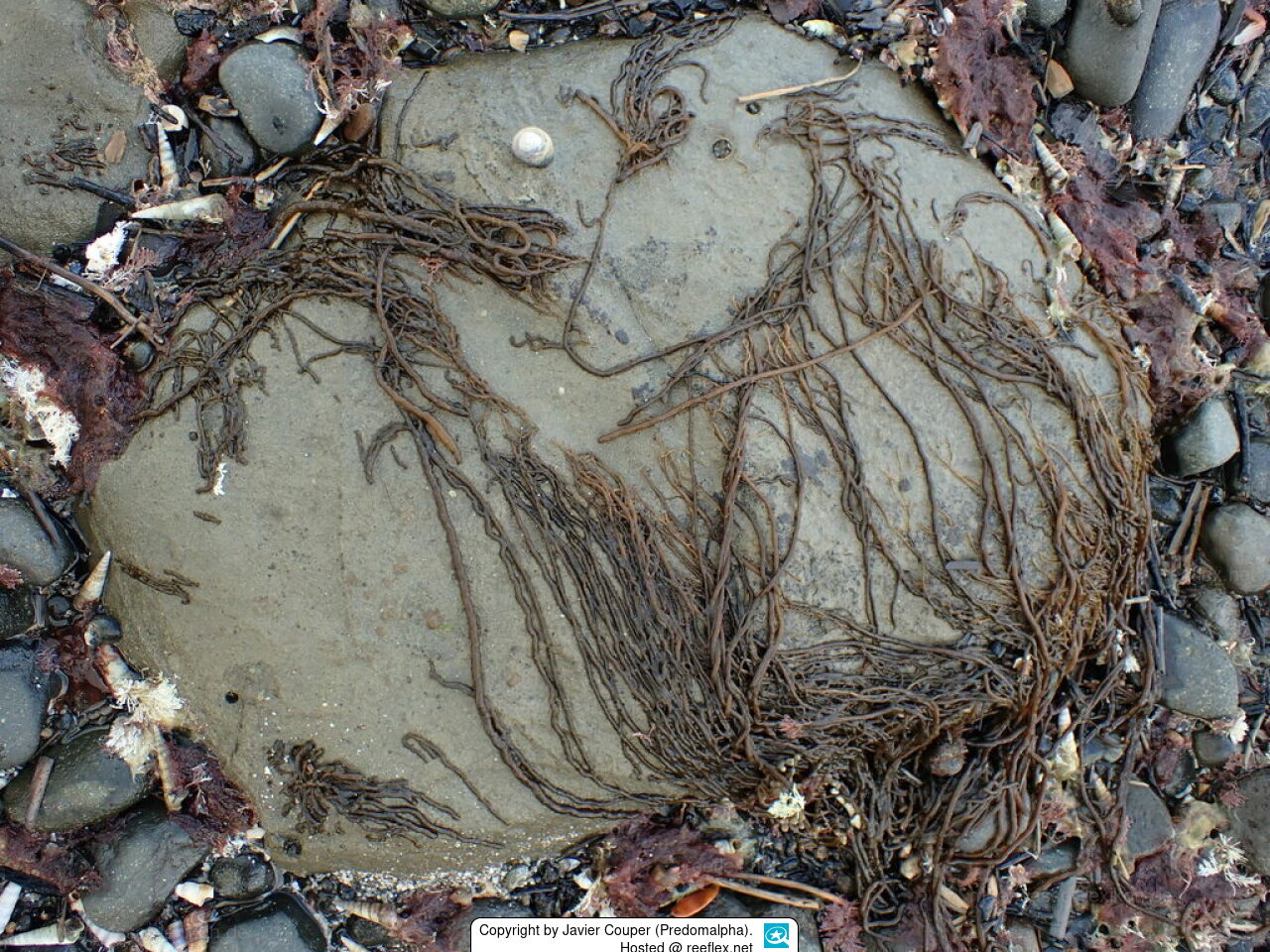Info
Myriogloea intestinalis (Harvey) Lindauer, V.J.Chapman & Aiken, 1961
Myriogloea intestinalis is a brown alga from the species-rich family Chordariaceae. The members of the family are found attached to rocks or other algae on the sea coasts. The sporophyte in these brown algae forms an olive-green to brown, filamentous or stalk-round thallus, which may be simple or irregularly tufted. It is attached to the substrate by a crust-like adhesive organ of compact filaments.
Myriogloea intestinalis is extremely slender (4-10 mm), but grows up to 1 m long. The brown alga resembles long strings. The surface is covered with fine hairs, but still has a slippery texture. The brown alga has an adhesive organ with which it attaches itself to stones. Myriogloea intestinalis can also incrust.
It appears mainly in late winter and spring. Occurrence extends along rocky shores near exposed beaches. In places the "cords" may be covered by sand.
Synonymised names:
Mesogloia intestinalis Harvey, 1855 · unaccepted
Myriogloea lindaueri Kylin, 1940 · unaccepted
Myriogloea intestinalis is a brown alga from the species-rich family Chordariaceae. The members of the family are found attached to rocks or other algae on the sea coasts. The sporophyte in these brown algae forms an olive-green to brown, filamentous or stalk-round thallus, which may be simple or irregularly tufted. It is attached to the substrate by a crust-like adhesive organ of compact filaments.
Myriogloea intestinalis is extremely slender (4-10 mm), but grows up to 1 m long. The brown alga resembles long strings. The surface is covered with fine hairs, but still has a slippery texture. The brown alga has an adhesive organ with which it attaches itself to stones. Myriogloea intestinalis can also incrust.
It appears mainly in late winter and spring. Occurrence extends along rocky shores near exposed beaches. In places the "cords" may be covered by sand.
Synonymised names:
Mesogloia intestinalis Harvey, 1855 · unaccepted
Myriogloea lindaueri Kylin, 1940 · unaccepted







 Javier Couper (Predomalpha), New Zealand
Javier Couper (Predomalpha), New Zealand



